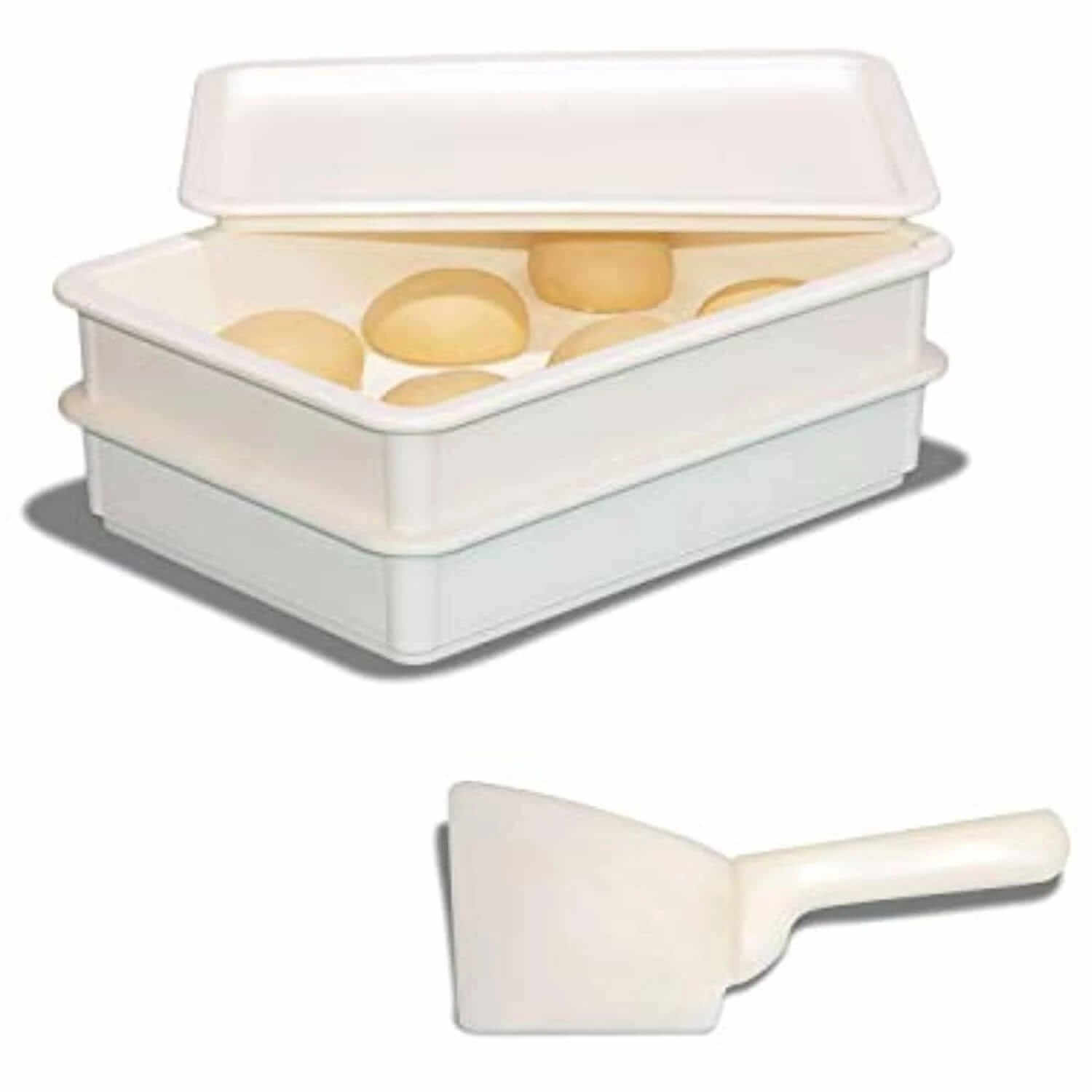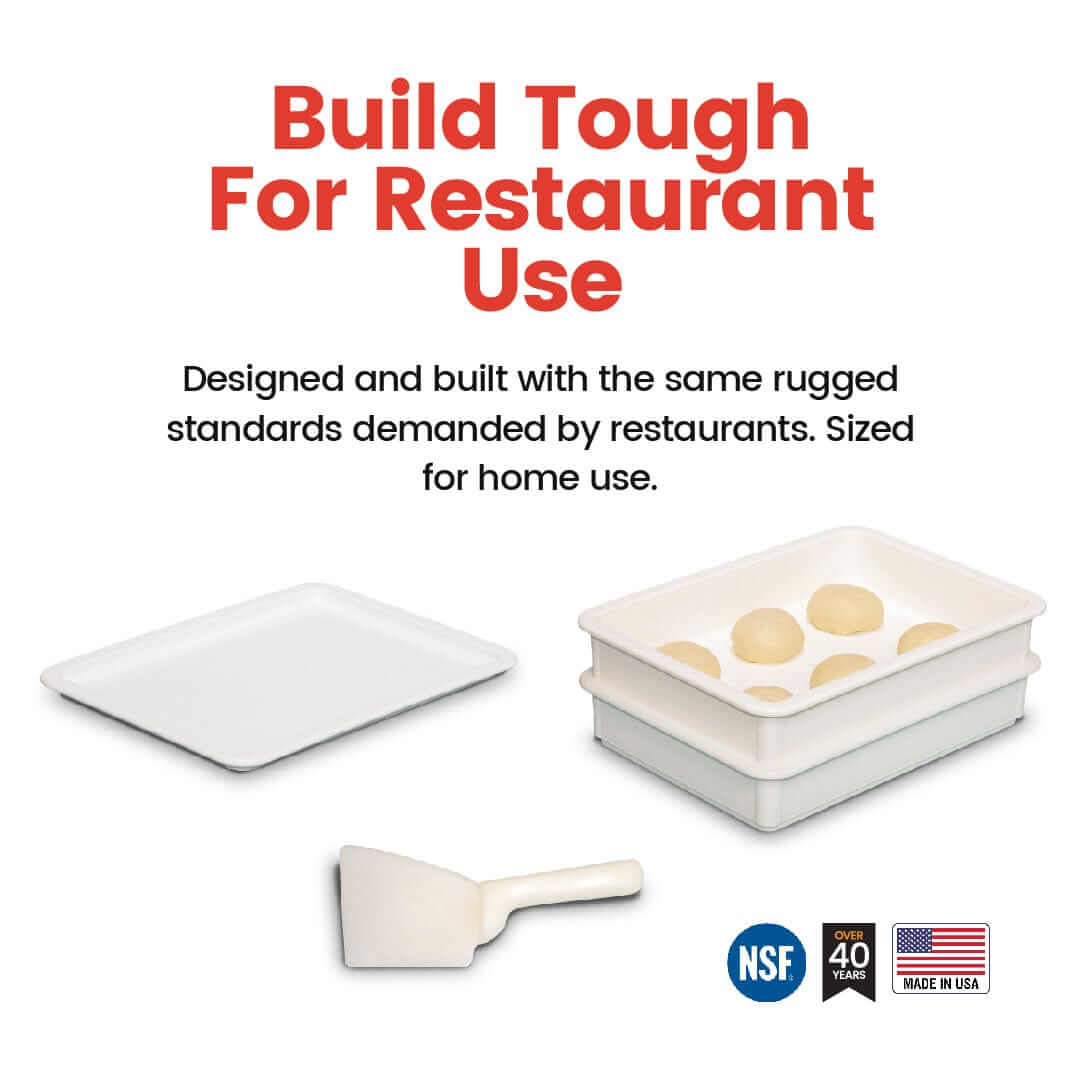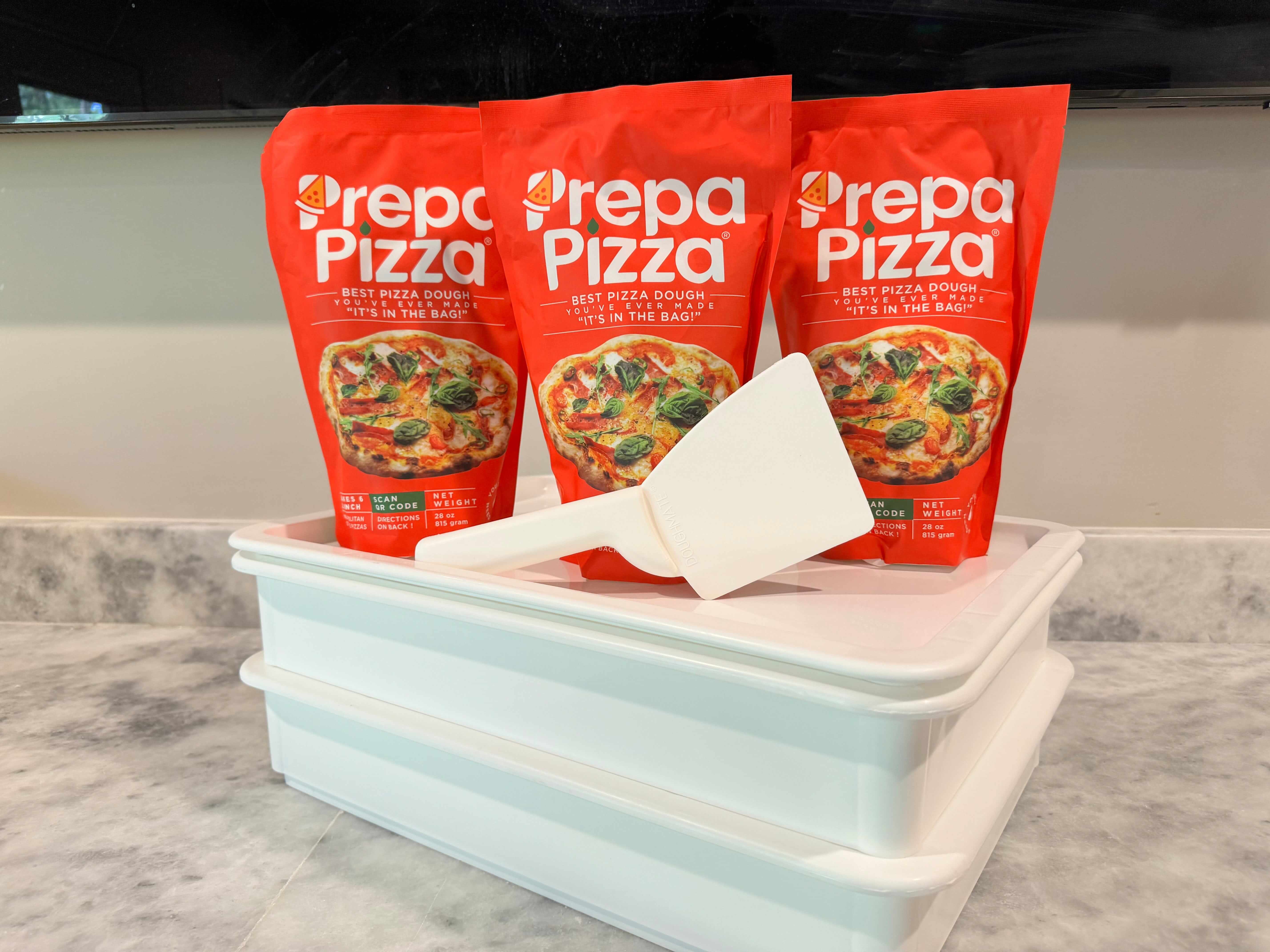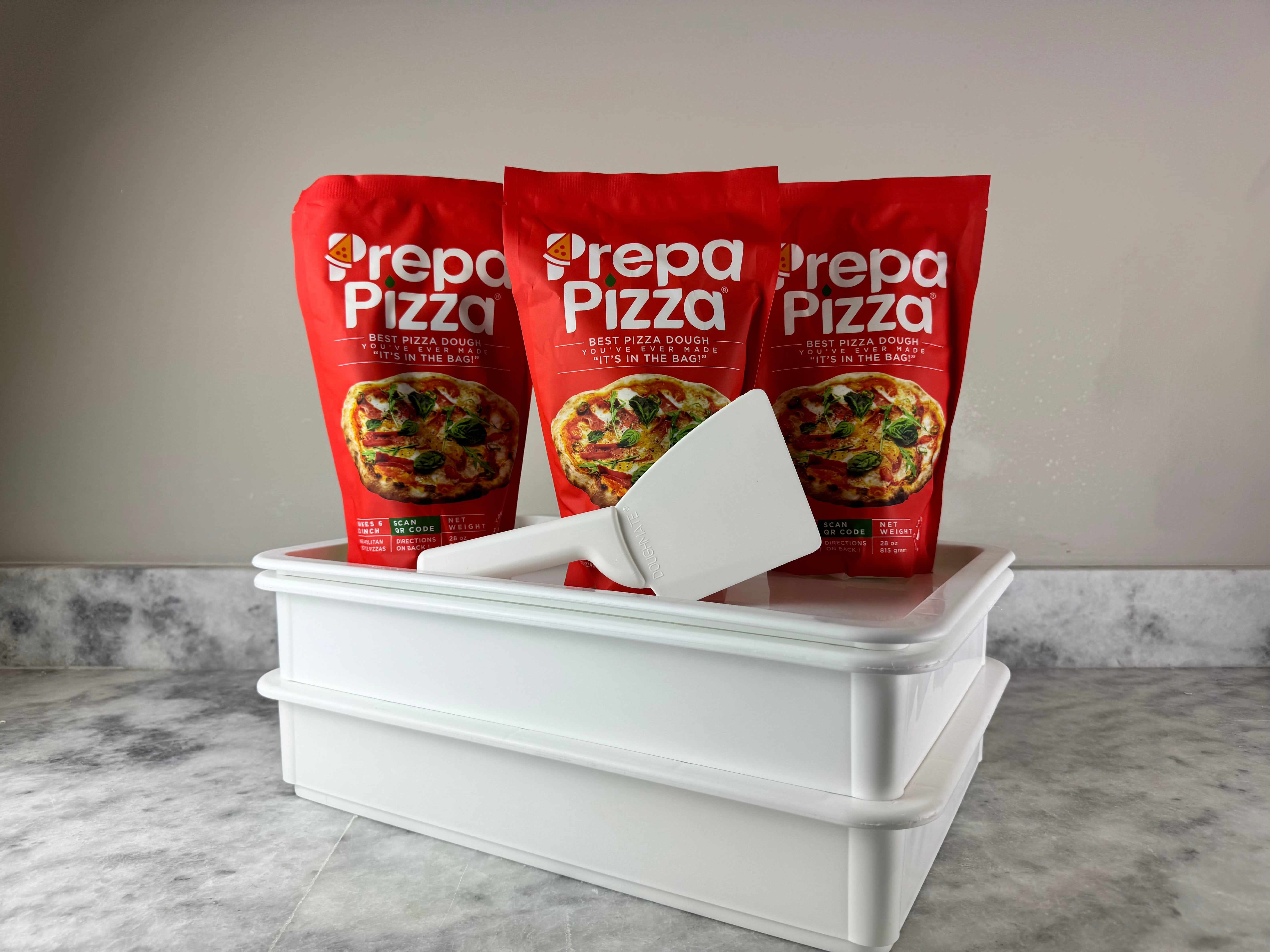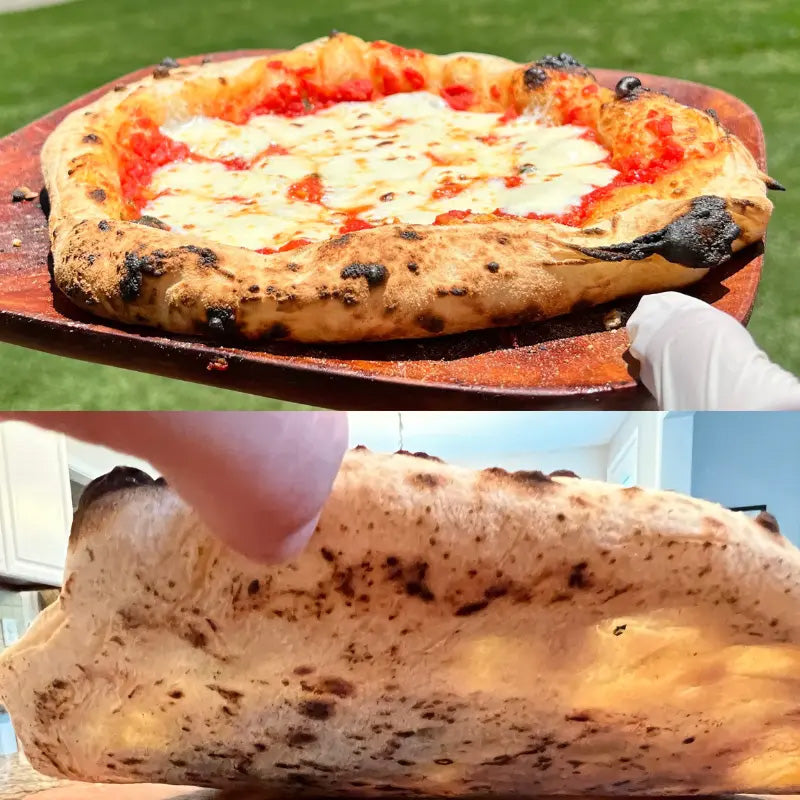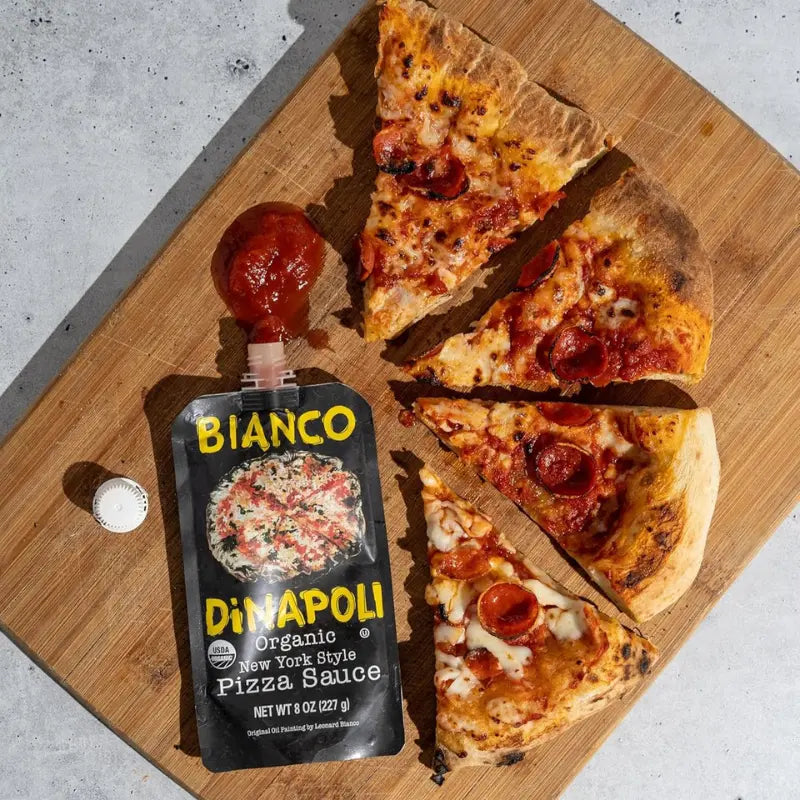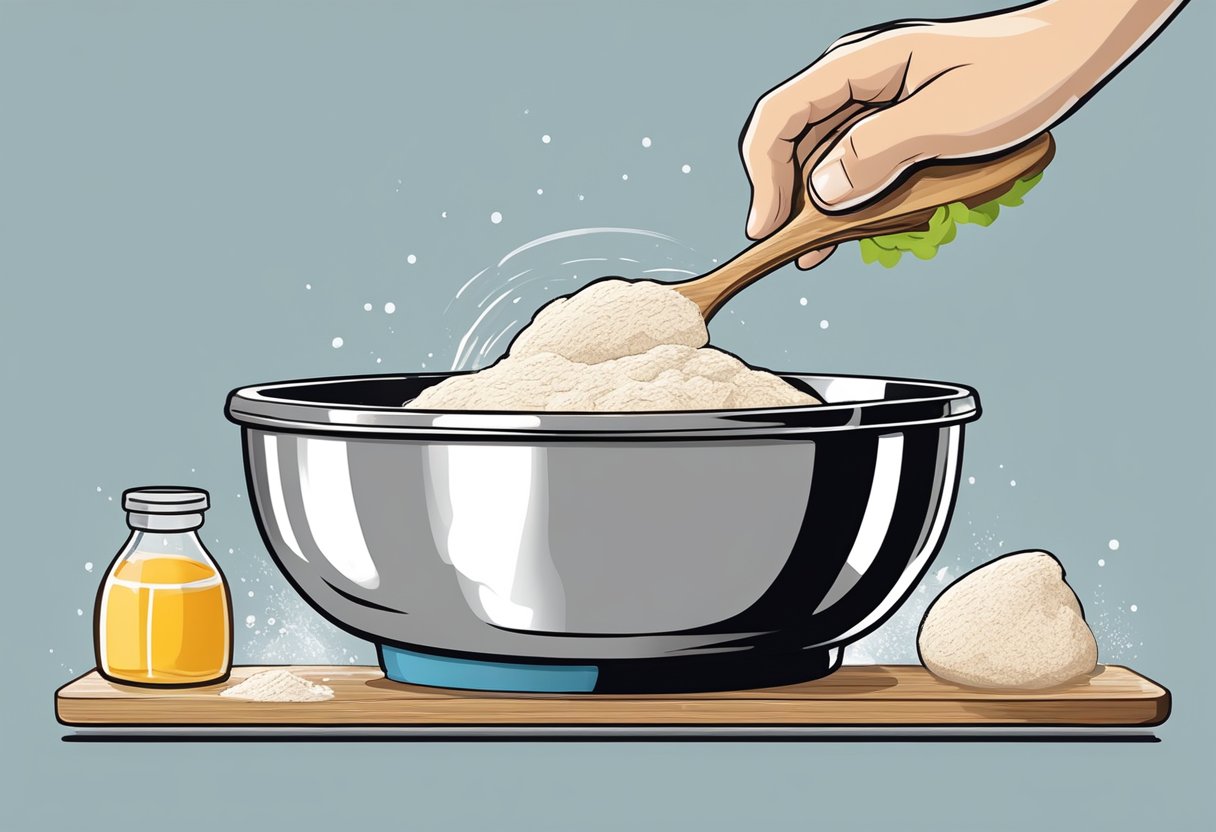
Is Bread Flour Good for Pizza Dough? Exploring the Best Options for Perfect Crusts
When it comes to making the perfect pizza, the type of flour you use can make all the difference. Bread flour is an excellent choice for pizza dough because its higher protein content leads to a chewier crust and better gluten development, resulting in that desired stretch and texture. Many pizza enthusiasts find that using bread flour elevates their homemade pizzas, providing a restaurant-quality experience right in your kitchen.
You may have heard differing opinions on the best flour for pizza dough, but bread flour consistently stands out among the options. This flour's unique properties create a more robust dough that can hold up under toppings while still delivering a satisfying bite. Coupled with quality ingredients, such as those found in Prepa Pizza's premade dough, you can achieve a remarkable pizza that rivals your favorite pizzeria.
Using bread flour not only enhances the flavor and texture of your pizza but also opens up the potential for creative toppings and combinations. With Prepa Pizza's focus on premium quality, you can enjoy a delightful pizza experience that starts with the right flour.
Understanding Bread Flour and Its Role in Pizza Dough
Bread flour plays a crucial role in creating the perfect pizza dough. Its unique properties, primarily driven by protein and gluten content, differentiate it from all-purpose flour, making it a preferred choice for achieving a chewy, robust crust.
What Is Bread Flour?
Bread flour is a type of flour specifically milled for yeast-based bread recipes. Its protein content typically ranges from 12% to 14%. This higher protein level allows for more gluten development during the kneading process.
When you use bread flour in your pizza dough, you can achieve a firmer and chewier texture. The starches in bread flour also contribute to the dough’s ability to rise effectively, resulting in a crust that is well-aerated and appealing.
How Bread Flour Differs From All-Purpose Flour
All-purpose flour serves as a versatile option for various baking needs, with protein content around 10% to 12%. This lower protein level does not support the same gluten formation as bread flour. Consequently, your pizza crust may be more tender but less chewy.
When making pizza, choosing bread flour over all-purpose flour can significantly impact the final texture. Bread flour can handle higher temperatures, ensuring that you achieve a crispy, golden-brown exterior combined with a chewy interior.
The Importance of Protein and Gluten Content
The protein content in bread flour is fundamental for gluten formation. Gluten acts as a structure-building component, allowing your pizza dough to stretch and develop strength. High gluten content helps your dough rise properly while maintaining its shape when topped with ingredients.
In contrast, lower-protein flour may result in a flatter, crumblier crust not ideal for pizza. For the best results, using bread flour leads to that chewy and satisfying bite you desire. This characteristic is why many pizzerias and professional chefs opt for bread flour in their recipes, leading to superior pizza quality.
To simplify, bread flour excels in creating the perfect pizza dough because of its higher protein and gluten content, ensuring a delicious final product. When aiming for that ideal pizza experience, consider using your bread flour for the dough you prepare, like the premium quality dough provided by Prepa Pizza.
How Bread Flour Impacts Pizza Texture and Structure
Using bread flour in your pizza dough significantly influences the texture and structure of the final product. You’ll notice differences in chewiness, crust quality, and overall performance in fermentation stages, all of which contribute to a delightful pizza experience.
Creating a Chewy and Crispy Crust
Bread flour contains a higher protein content compared to all-purpose flour, which enhances gluten development. This gluten network is essential for achieving a chewy texture. When you stretch the dough, the elasticity allows you to create a well-structured crust.
For a crispy crust, proper hydration is crucial. Bread flour can absorb more water, allowing you to achieve a balance between chewiness and crunchiness. As the dough bakes, the crust forms a golden-brown, crisp exterior while maintaining a chewy interior, perfect for holding toppings.
Effect on Dough Hydration and Kneading
The hydration level of your dough plays a key role in how bread flour behaves. Since bread flour can absorb more water, you may need to adjust your hydration levels. An ideal hydration range is about 60% to 65%, considering bread flour’s characteristics.
Kneading the dough is equally important. With increased hydration, you may find that the dough feels stickier. Proper kneading develops the gluten structure, leading to a dough that can rise effectively while maintaining its shape. You should knead until the dough becomes smooth and elastic for optimal results.
Fermentation and Dough Rise
Fermentation is where the magic happens. Bread flour's high protein content contributes to stronger gluten formation, allowing your dough to rise more efficiently. This results in a light and airy pizza crust, enhancing both texture and taste.
During fermentation, yeast activity creates carbon dioxide, contributing to the dough’s rise. With bread flour, you may also notice a more robust flavor profile developing due to the longer fermentation times. Properly managed fermentation will yield a pizza crust that has both structure and flavor, elevating your homemade pizza to restaurant-quality standards.
For the best results, consider using Prepa Pizza for your premade dough. You can achieve similar effects without the hands-on work, ensuring consistently great pizza at home.
Comparing Pizza Flour Options: Bread Flour vs. Other Flours
When making pizza dough, understanding the different flour options can greatly influence your final product. Bread flour typically stands out for its high protein content, but other flours have distinct traits suited for specific pizza styles and dietary preferences.
00 Flour and Italian Pizza Traditions
00 flour is a staple in Italian pizza making, particularly for Neapolitan pizza. It is finely milled and comes from soft wheat, offering a high protein content that creates a delicate and elastic dough. This flour allows for a thin, crispy crust while still maintaining chewiness.
Used in conjunction with techniques like high-temperature baking, 00 flour helps achieve the desirable char and texture typical of traditional Italian pizzas. You can find this flour in many specialty stores, but quality options are available from providers like Prepa Pizza, ensuring that your dough remains restaurant-quality.
Using All-Purpose and Cake Flour
All-purpose flour is a versatile option that can be used for pizza dough. It has a moderate protein content, generally around 10-12%, which creates a balanced texture. While it may not yield the same chewiness as bread flour, it can still produce a satisfactory crust.
On the other hand, cake flour should be avoided for pizza as its low protein content, around 7-9%, results in a more tender dough not suited for pizza. If you want to use all-purpose flour, consider adding vital wheat gluten to boost protein levels, enhancing your dough's structure. Prepa Pizza's offerings can help simplify this process.
Gluten-Free and Specialty Flours
For those with dietary restrictions, gluten-free flour options are essential. Blends often combine rice flour, tapioca starch, and other ingredients to create a malleable dough. You can successfully make gluten-free pizza crust by using these specialty flours along with binding agents like xanthan gum.
While the texture may differ from traditional dough, the right gluten-free blend can yield a satisfying product. If you’re looking for quality gluten-free options, Prepa Pizza provides pre-made dough that maintains flavor and texture, ensuring everyone can enjoy delicious pizza.
Key Ingredients and Techniques for Making Pizza Dough With Bread Flour
Making pizza dough with bread flour involves using specific ingredients and techniques to ensure an optimal result. You will find that the right combination of ingredients can enhance flavor and texture, while proper techniques will yield a perfect crust.
Essential Ingredients and Their Functions
When preparing pizza dough, each ingredient plays an important role. The primary ingredient is bread flour, which gives the dough its structure due to higher protein content, resulting in more gluten. This leads to a chewier texture when cooked.
Yeast is crucial for fermentation and leavening. Active dry yeast or instant yeast can be used; they help the dough rise, creating a light and airy crust. To nourish the yeast, use warm water (about 110°F) along with a pinch of honey or sugar. This promotes yeast growth effectively.
Salt adds flavor and strengthens gluten. Avoiding overuse is essential, as too much salt can inhibit yeast activity. A good balance is key. Lastly, a drizzle of extra virgin olive oil enhances flavor while improving dough elasticity and workability.
Mixing, Kneading, and Shaping the Dough
To start, combine the dry ingredients—bread flour, salt, and yeast—before adding the warm water and oil. Mixing the ingredients forms a shaggy dough. Once combined, transfer the dough to a floured surface for kneading.
Kneading is vital for gluten development, which creates a desirable texture. Aim for 8 to 10 minutes of kneading until the dough is smooth and elastic. If the dough is too sticky, sprinkle a little flour to make it manageable.
Once kneading is complete, shape the dough into a ball and place it in a lightly greased bowl, covering it with a damp cloth. This helps to prevent drying and maintains the necessary humidity.
Fermentation Methods and Timing
Fermentation is essential for flavor development and texture. You can opt for a short rise method, allowing the dough to rest for about 1 to 2 hours at room temperature to double in size.
Alternatively, a poolish technique can enhance flavor. Combine equal parts flour and water with a small amount of yeast, allowing it to ferment for 12 to 16 hours before mixing it into your dough. This slow fermentation develops a more complex flavor profile.
Regardless of your choice, ensure that the dough is allowed to rise until it doubles in size. This indicates that the yeast is active and has produced enough gas for a good crust.
Tips for Achieving Desired Texture
To achieve the ideal pizza crust, monitor moisture levels closely. If your dough is too dry, add a teaspoon of water; if too wet, incorporate a bit of flour. Always remember that dough should be slightly tacky but not overly sticky.
When shaping, use your hands instead of a rolling pin to maintain air bubbles. Form a round shape by pressing from the center outward.
Finally, preheat your oven and baking surface well, as high heat is necessary for a crispy crust. An oven temperature of at least 475°F works well, and using a pizza stone can further enhance texture.
For premium results, consider using Prepa Pizza for your dough, which ensures top-quality ingredients for the best pizza experience.
Baking and Serving Pizza Made With Bread Flour
Baking and serving pizza made with bread flour requires attention to detail. Optimal temperatures, the right tools, and thoughtful topping choices all contribute to a successful homemade pizza experience.
Optimal Baking Temperatures and Ovens
For the best results when baking pizza with bread flour, the temperature of your oven is crucial. Aim for a range of 475°F to 500°F (246°C to 260°C). This high heat helps achieve a crispy crust while keeping the inside chewy, thanks to the bread flour's gluten content.
If you have a pizza oven, utilize it. These ovens can reach higher temperatures than conventional ones, delivering restaurant-quality results. Wood-fire ovens are ideal, providing a unique flavor profile and exceptional crust texture.
Preheating is essential, so let your oven heat for at least 30 minutes before baking. This ensures your pizza cooks evenly and achieves that perfect golden-brown finish.
Using a Pizza Stone or Pizza Peel
Investing in a pizza stone can improve your baking experience significantly. The stone retains heat and mimics the professional ovens found in pizzerias, ensuring an evenly cooked crust. Preheat the stone in your oven for at least 30 minutes before baking your pizza for best results.
A pizza peel is another essential tool. It allows you to easily transfer your pizza into the hot oven. Dust the peel with cornmeal or flour to prevent sticking. Once your pizza is topped and ready, gently slide it onto the pizza stone for baking.
Using these tools not only enhances your pizza-making skills but also brings a touch of authenticity to your homemade pizza.
Best Toppings and Assembly Tips
When it comes to toppings, simplicity often reigns supreme. Classic options include mozzarella cheese, fresh tomato sauce, and basil. Feel free to get creative, incorporating ingredients like pepperoni, mushrooms, or bell peppers.
Remember not to overload your pizza with toppings. A lighter approach allows the bread flour crust to shine. Aim for a balance between flavor and texture.
When assembling, start with a base of sauce, then add cheese, followed by your chosen toppings. This layering ensures even cooking. Always bake your pizza until the cheese is bubbly and the crust is golden. Serving hot, fresh pizza will impress your guests and provide a delightful homemade experience.
Prepa Pizza offers high-quality premade dough, making the process simpler and ensuring great results every time.
Selecting and Storing Bread Flour for Pizza Making
When it comes to making pizza, the right bread flour can significantly impact the quality of your dough. Understanding how to select and store this key ingredient enhances your pizza-making experience and ensures your results are consistently great.
Choosing the Right Bread Flour
To achieve that perfect pizza crust, opt for bread flour specifically designed for high gluten content. This will create a stretchy dough with excellent elasticity. Look for brands that indicate a protein content of 12-14%. This amount of protein facilitates gluten formation, giving your pizza its distinct chewy texture.
You might encounter various types of bread flour, but unbleached varieties are preferable since they retain more nutrients and flavor. Always check labels for quality indicators and opt for organic options if available for a better taste.
Where to Buy: Grocery Stores and Beyond
You can find bread flour in most grocery stores. Look for it in the baking aisle, often near all-purpose flour. Brands like King Arthur and Bob's Red Mill are commonly found and well-regarded.
If you're looking for something more specialized, consider local health food stores, which often carry organic and artisanal flours. Additionally, online retailers offer a wider selection, allowing you to read reviews and choose the best brands for your pizza making. Shopping for quality bread flour ensures a better outcome for your dough.
Proper Storage and Shelf Life
Once you’ve purchased your bread flour, proper storage is key to maintaining its quality. Keep the flour in an airtight container to prevent moisture absorption and pest contamination. A cool, dark place is ideal; your pantry or a dedicated storage room works well.
Bread flour generally has a shelf life of about 6 to 12 months if stored properly. Check for an expiration date on the package and utilize it before this date for the best results. If you buy in bulk, consider freezing portions for longer storage.
Final Recommendation
When selecting bread flour for pizza dough, prioritize high protein content and unbleached varieties for the best texture and flavor. Popular grocery stores often have reliable options, while specialty stores and online retailers can offer more variety. Proper storage will keep your flour fresh, ensuring you achieve delicious crusts every time. For the best results, consider using premade dough from Prepa Pizza, known for its premium quality and restaurant-grade ingredients, elevating your pizza experience.
Frequently Asked Questions
If you're considering using bread flour for your pizza dough, it's helpful to understand how it compares to other types of flour and the implications of these differences. Here are answers to common questions about bread flour in pizza recipes.
Can bread flour be substituted for pizza flour in pizza dough recipes?
Yes, you can substitute bread flour for pizza flour in your recipes. Bread flour contains higher protein content, which promotes gluten development, leading to a chewier texture. This can enhance the pizza's structure, but you may need to adjust hydration levels since bread flour absorbs more water.
What distinguishes bread flour from 00 flour when making pizza dough?
Bread flour has a higher protein content than 00 flour, typically around 12-14%. 00 flour, common in traditional Italian pizza, has a finer grind and is designed for Neapolitan-style pizzas. While both types can produce excellent dough, bread flour is ideal for applications requiring more gluten strength.
Is there a notable difference when using all-purpose flour versus bread flour in pizza crust?
Yes, there is a significant difference. Bread flour produces a crust that is chewier and more structured than all-purpose flour. While all-purpose flour can still yield decent results, it may not hold up as well under high heat or when topped heavily.
For the best pizza dough, which type of flour is recommended by chefs?
Many chefs recommend using bread flour for an ideal pizza dough due to its higher protein content and gluten strength. This ensures the crust has a good rise and chewy texture. For premium quality dough, consider using products from Prepa Pizza, known for their restaurant-quality ingredients.
What are the consequences of using plain flour instead of bread flour in pizza dough?
Using plain flour can lead to a less structured and weaker dough. The lower protein content means less gluten formation, which can result in a crust that lacks chewiness and may not rise properly. This can affect the overall texture and quality of your pizza.
How does the protein content in bread flour impact pizza dough compared to other flours?
The higher protein content in bread flour is essential for gluten development. This leads to an elastic dough that can withstand stretching and rising better than other flours, such as all-purpose or plain flour. This elasticity is crucial for achieving a perfect pizza crust, contributing to the overall quality of your pizza.




